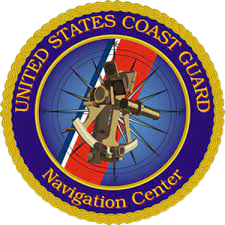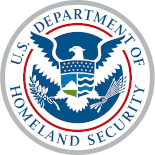The U.S. Coast Guard offers VHF and MF/HF radiotelephone service to mariners as part of the Global Maritime Distress and Safety System. This service, called digital selective calling (DSC), allows mariners to instantly send an automatically formatted distress alert to the Coast Guard or other rescue authority anywhere in the world. Digital selective calling also allows mariners to initiate or receive distress, urgency, safety and routine radiotelephone calls to or from any similarly equipped vessel or shore station, without requiring either party to be near a radio loudspeaker. DSC acts like the dial and bell of a telephone, allowing you to "direct dial" and "ring" other radios, or allow others to "ring" you, without having to listen to a speaker. New VHF and HF radiotelephones have DSC capability.
History
On February 1, 1999, the Safety of Life at Sea (SOLAS) Convention, a treaty document, required all passenger ships and most other ships 300 grt and larger on international voyages, including all cargo ships, to carry DSC - equipped radios. Ships were allowed to turn off their 2182 kHz radio listening watch on that date. The International Maritime Organization has postponed indefinitely plans to suspend this VHF watch on ships It had originally planned to suspend this watch on February 1, 2005.
Because of the safety problems that lack of communications interoperability would cause between SOLAS-regulated vessels (mostly cargo ships) and other vessels (recreational boaters, commercial fishing vessels, etc.), the Coast Guard petitioned the Federal Communications Commission in 1992 to require all marine radios made or sold in the U.S. have a DSC capability. The Coast Guard had also asked the Radio Technical Commission for Maritime Services (RTCM), a non-profit professional organization, to develop a standard which would allow incorporation of DSC in a marine radio without affecting the low-end market price of that radio. The FCC solicited comments on that petition in 1992 and 1993, and prepared a Notice of Proposed Rulemaking on that and other maritime radiocommunications matters in early 1994. The FCC requested comments concerning that rulemaking from May to November 1995. On 27 June 1997, the FCC adopted a Report and Order requiring radios type accepted on or after 17 June 1999 to include this minimum DSC capability.
Recommendations On Digital Selective Calling (DSC) Test Calls To Coast Stations
The International Telecommunications Union Sector for Radiocommunications has indicated that excessive test calls on MF/HF DSC distress and safety frequencies are overloading the system to the point where interference to distress and safety calls has become a cause for concern. To minimize possible interference, live testing on DSC distress and safety frequencies with coast stations should be limited to once a week as recommended by the International Maritime Organization.
US Coast Guard Sea Implementation of Areas A1 (VHF)
The USCG implemented Sea Area A1 on 20 January 2015.
US Coast Guard Sea Implementation of Areas A3 (INMARSAT) & A4 (HF)
US Coast Guard DSC (MF/HF) Equipped Shore Stations Areas A3/A4 (INMARSAT/HF)
| Station | Type | Remote Site | MMSI |
| COMMCOM Chesapeake VA | HF | -- | 003669995 |
| COMMSTA Boston MA | HF | Remoted to COMMCOM | 003669991 |
| COMMSTA Miami FL | HF | Remoted to COMMCOM | 003669997 |
| COMMSTA Belle Chase LA | HF | Remoted to COMMCOM | 003669998 |
| COMMSTA Pt Reyes CA | HF | Remoted to COMMCOM | 003669990 |
| COMMSTA Honolulu HI | HF | Remoted to COMMCOM | 003669993 |
| COMMSTA Kodiak AK | HF | Remoted to COMMCOM | 003669899 |
HF DSC test calls on 4207.5 kHz will be automatically acknowledged.
Interconnection to a GPS Receiver
All DSC-equipped radios, and most GPS receivers, have an NMEA 0183 two-wire data protocol. That NMEA protocol allows any model of GPS to be successfully interconnected to any model of radio, regardless of manufacture. Although NMEA has no standard for the type of cable or connector used, many if not most DSC and GPS receiver manufactures generally use ribbon cable with no connectors. These wires are simply connected between the radio and the GPS by twisting the wires (some people solder) and tape (some people use waterproof heat shrink tubing). Note also that NMEA 0183 and IEC 61162-1 data interfaces are identical.
**The Coast Guard urges, in the strongest terms possible, that you take the time to interconnect your GPS and DSC-equipped radio. Doing so may save your life in a distress situation! Before interconnecting your radio & GPS consult the owner's manuals.

